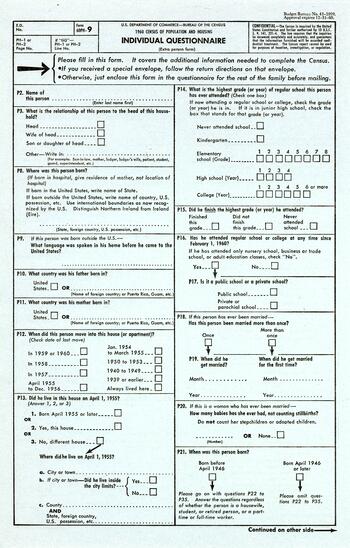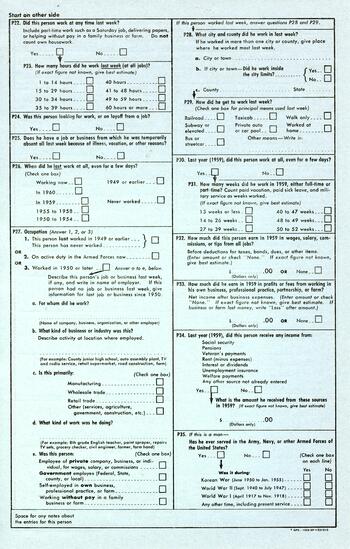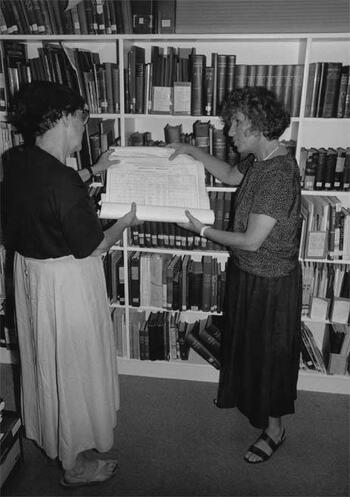By the 1930 US Census there were 32 questions being asked of each household, including whether or not there were any veterans in the household and a category “Citizenship, etc” that asked where each person in the household was born and if not US born, in what year they had been naturalized. A statistical sample questionnaire was added in 1940. Five per cent of the population were asked additional questions as an attempt of the government to gauge the effects of the Great Depression on the people.
For the first time, in 1960, the Census Bureau mailed short form questionnaires to all urban residents in the United States, who were instructed to complete the questionnaires themselves and keep them until an enumerator came to collect the form. In the following Census in 1970, residents were asked to mail back the forms and enumerators were only sent out to visit non-respondents. In 1960, twenty-five percent of households received the "long-form" questionnaire, while the remainder received the "short form." In the 1970 and subsequent censuses, approximately one-sixth of all households received the "long-form" questionnaire. During that time, none of the short-form questionnaires included a question about citizenship or birthplace, although the long-form questionnaires each did. In the 2010 Census, the long and short form questionnaires used from 1940-2000 were replaced by a single 10-question form. Questions typically appearing on the long form now are asked by the annual American Community Survey (ACS).
1960s individual questionnaire, US Census Form, page 1. Source: Smithsonian National Museum of American History.
1960s individual questionnaire, US Census Form, page 2.Source: Smithsonian National Museum of American History.
Nancy Wright and Elly Shodell from Port Washington Public Library (ca 1992), standing with 1900 census which provides important occupational, social and ethnic data for oral history interview research. Image provided by Port Washington Library History Collection on New York Heritage.


